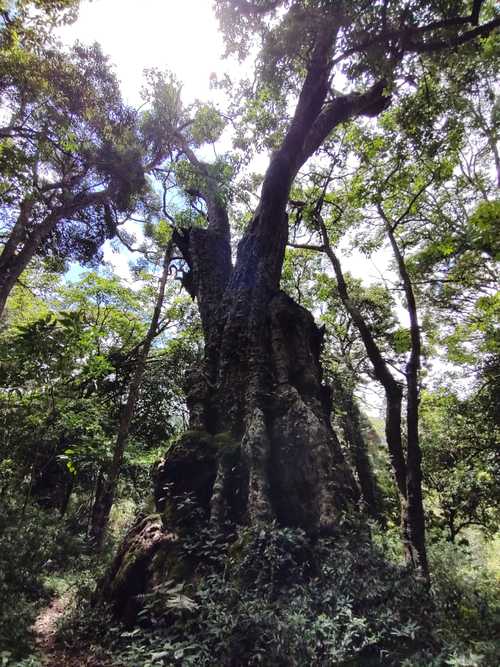
“Soundscapes of Lesser Nature” is a soundscape ecology research project which focuses on deep listening as a visceral way to understand the relationship between humans and nature. The project is being pursued as part of the earth.fm grants for Soundscape Studies, 2023.
‘Lesser’ nature refers to the ecology of human settlements in and around environmentally sensitive areas. The project hypothesizes that the soundscapes of these spaces can provide a fresh insight into conflicts and cooperation within human-nature dynamics in India, in a way which is more experiential than the study of sanitized enclosures of nature reserves.
The project is also an attempt to understand the paradox of considering humanity as detached from nature, then subsequently finding the remnants of ‘pristine, untouched, and exotic nature’ in order to preserve them – and ultimately the consumerism, and commercialisation associated with this.
Field Trip 1: Vattakanal, Western Ghats, Tamil Nadu, India, June 2023
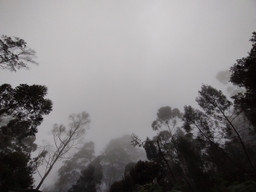
It is time for the monsoon to settle down; the sounds of birds, frogs, toads, cicadas, crickets, and geckos have enveloped the sonic landscape, in the same way that the clouds have curtained the visual landscape. A staticky sound like sparks of electricity helps define the sonic identity of the area, as I mentally map the space – a sound I will now associate with the pre-monsoon Western Ghats mountain range in and around Vattakanal.
A photographic description of Vattakanal might not explain the number of tourists visiting it to access one of nature’s ‘best-kept secrets’, and the infrastructure being put in place to support this influx. But listening to the static suggests anxious whispers of the secrets that remain, and the question of whether they will remain secret. One’s thoughts can easily become attuned to this overarching static and merge with the visual haze of the clouds, only to be interrupted by occasional bursts of rainfall. The rain clears the mist, making the static louder than before.
Vattakanal is a hill station at an altitude of about 2,100 meters, which is as high as some hill stations in the Himalayas, like Shimla. And with flora and fauna endemic to the unique tropical ecosystem of the Western Ghats, it is known for its ‘mosaic’ ecosystem: a complex network of montane grasslands, stunted pine, and eucalyptus plantations, and shola forests.
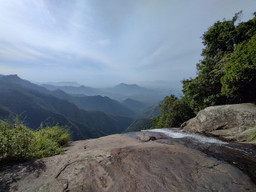
Pine and eucalyptus were brought in as invasive species during British colonial rule, to make the land more productive. This has threatened the functionality of the existing ecosystem, especially the grasslands and their role in absorbing and dissipating the flow of rainwater through and beyond the forests of the Western Ghats, and the adjoining plains. These haphazardly introduced plantations, which over time have transformed into a full-blown invasion, serve as a visual horror to those aware of their disruptive nature.
For a long time, attempts to restore the shola forests and the grasslands have been at the center of the region’s ecological conservation strategy: a battle between sholas, grasslands, and non-native tree species for maximum space. The level of human control over natural phenomena, the demands of development, habitat conservation initiatives to preserve existing flora and fauna, and the alignment of the organic movement of human beings with the policy framework for regulating forest land, leads to the demarcation of reserved and unreserved areas and conflict and cooperation between the two – another tangent in the larger dynamics of the formation of enclosures.
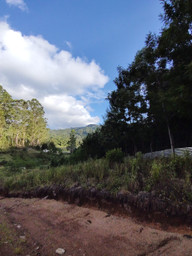
These enclosures serve as boundaries between human settlements, the nature in and around them, and the natural spaces reserved as wilderness habitats for sensitive flora and fauna (including vulnerable species like Nilgiri langurs and the gaur or Indian bison: one of the largest extant bovine species). However, the effectiveness of these boundaries, analyzed in terms of the effects of human-made sounds on flora and fauna habitat formation, is an intriguing area of exploration. Finding patterns in the way movements occur in nature on the basis of sonic attributes, and thus including provisions for soundscape ecology to be used as a tool while creating necessary enclosures and overlaps for human-nature coexistence, can be a holistic measure in the process of reserving regions for nature (and for humans).
For example, visually, Kookal Lake is a densely forested area, with fencing appearing to effectively divide its reserved and unreserved areas. But the soundscape reveals that human sounds such as vehicles’ horns, and the occasional traffic associated with tourists looking for a sparsely populated natural retreat, are amplified due to the area’s acoustics. This evidence raises questions about ‘visual’ fencing, as human-made noise can push the actual barrier much deeper into the forest.
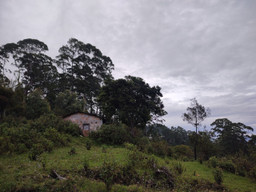
After arriving in Vattakanal, I listened to stories about the bison in the region. In India, they have the same conservation status as tigers. Their relatively peaceful, recent movements at the intersection of forest land and human settlements is another area of study among ecologists and wildlife experts. An unattended mic set up outside the hostel I was staying in recorded a brief visit by a bison, one cold night: a small grunt while it moved around the village’s hostel area on a nocturnal trip from the forest into the settlement.
I also listened to the stories of Bob Stewart and Tanya Balcar, British conservationists who arrived as backpackers but stayed for decades, also made Vattakanal more well known. They worked on the ground for ecological conservation in the region until their deaths in 2020 and 2016.
To record a soundscape characteristic of this region – and attempt to encapsulate my observational thoughts and views as a soundscape recordist – I arrived at a preserved section of the forest. The Pambar Shola plantation acts as a nursery for shola trees, which grow in the shade of taller pines and eucalyptus. A visual change was provided by a few rhododendrons – a Himalayan species believed to have spread over 1,200 miles (2,000 km) during periods when the temperature and ecology of the Western Ghats and the Himalayas were similar, due to seed dispersal by birds.
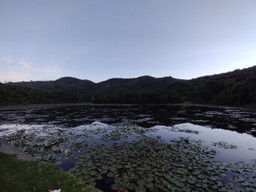
I stationed my equipment beside a small stream, the sound of which, to me, symbolized the larger ecological processes taking place over centuries in the Western Ghats, to create a soundscape which could become a starting point for discussing Vattakanal, as per the hypothesis I am trying to explore through this project. At a personal level, I will remember this flowing water as the sound of sunrise in a tropical forest in the Western Ghats, layered with the sounds of birds, the occasional howling of Nilgiri langurs, and the distant barks of dogs which had followed me along the trail.
This stream led to the ‘Secret Waterfalls’, which I eventually recorded. I was told that this particular area was a dumping ground for the infamous industrial waste which caused long-term mercury poisoning of the water and soil. The wider Kodaikanal region is known for a proven case of mercury poisoning, caused by the British owned Hindustan Unilever. The industry was shut down as a result, but research into the long-term effects continues.
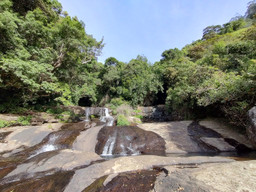
Among backpackers, Vattakanal is a popular destination for those looking for alternative ways of travel and living (and psychedelic drugs); their influx has been boosted by emerging phenomena like post-COVID remote working. It is also known as Little Israel – a stop on the Indian leg of the so-called hippie trail – or rather, an addition to the various Little Israels across India. Israeli travelers spend a considerable amount of time here, at specific times of the year; but is there a Little Vattakanal in Israel?
Carefully listening to all these elements also suggests that Vattakanal is losing its secrecy; it appears to be in the process of becoming an equivalent to something like the Himalayan Shimla. In recent years, residents of that city have had to appeal to peak-season tourists to stay away, and to leave the remaining water for local consumption.
Further reading:
- ‘A Secret in the Hills’
- Kodai Mercury
- ‘Oh My Gaur! Living alongside the Indian Bison That’s Moving Out of Forests’
- ‘The Legacy of the Late Bob Stewart and Tanya Balcar’
- Ian Lockwood: Musings, Trip Accounts and Images from South Asia: posts about sholas

Bhaskar is one of five grantees of the earth.fm Grants field recording program, who will be sharing his journey, research, and encounters in the site’s blog. His focus is on the relationships and dynamics between humans and the more-than-human world, the paradox of protected natural areas, and conservational delusions about ‘exotic’ nature.
🎧 Listen to Bhaskar’s recordings on earth.fm
Featured photo of 600-year old tree by A Bhaskar Rao
All photos and recordings courtesy of A Bhaskar Rao
Earth.fm is a completely free streaming service of 1000+ nature sounds from around the world, offering natural soundscapes and guided meditations for people who wish to listen to nature, relax, and become more connected. Launched in 2022, Earth.fm is a non-profit and a 1% for the Planet Environmental Partner.
Check out our recordings of nature ambience from sound recordists and artists spanning the globe, our thematic playlists of immersive soundscapes and our Wind Is the Original Radio podcast.
You can join the Earth.fm family by signing up for our newsletter of weekly inspiration for your precious ears, or become a member to enjoy the extra Earth.fm features and goodies and support us on our mission.
Subscription fees contribute to growing our library of authentic nature sounds, research into topics like noise pollution and the connection between nature and mental wellbeing, as well as funding grants that support emerging nature sound recordists from underprivileged communities.
